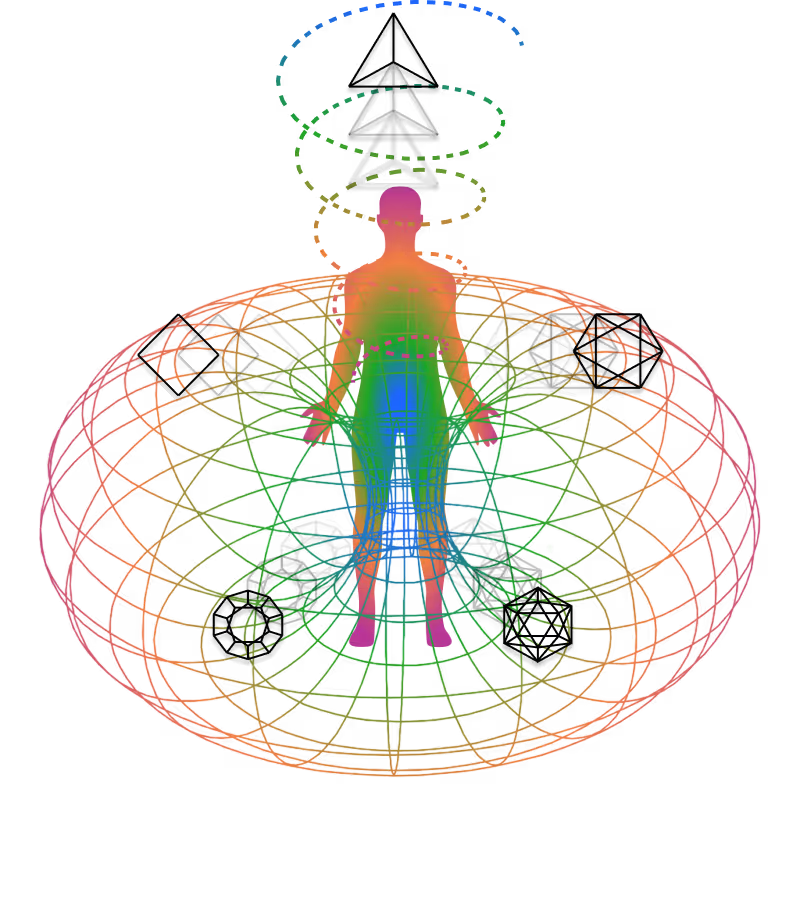Mental Health and Course Correction
Lesson Details
The Brahman Kernel model approaches mental health disorders not as chemical imbalances or biological failures of the hardware, but as systemic failures in distinction-making, manifesting as quantifiable geometric patterns of rigidity, fragmentation, and noise within the Conscious Agent's operating system.

🎙️ Related Podclass
Lesson Content
The goal of the Health.app (Ayurveda) application is to revolutionize medicine by treating these conditions as navigable terrain errors, leveraging the Guna Process Manager and Karma Security Framework for diagnosis and course correction.
Here is an analysis of mental disorder categories through the lens of the Cosmic OS:
I. Core Diagnosis: Geometric Pathology and Guna Imbalance
Mental health disorders are categorized based on their dominant Geometric Pathology and the corresponding state failure in the Guna Process Manager.
A. Rajasic Over-Processing (Fragmented and Hyperactive Geometry)
Disorders characterized by excessive, restless energy, high mental throughput, and scattered attention are rooted in uncontrolled Rajas.
Disorder Category (Clinical): Anxiety disorders
Cosmic OS Interpretation: Excessive Vrittis/Vikshepa
Geometric Pathology: High-frequency noise and chaotic fragmentation.
Systemic Effect: The mind (Chitta) generates excessive, predictive Vritti (mental fluctuations), consuming system resources and causing persistent computational load (stress).
Disorder Category (Clinical): Bipolar disorders
Cosmic OS Interpretation: Guna State Bifurcation
Geometric Pathology: Extreme oscillation between the high-energy Rajas (manic phase) and deep Tamas (depressive phase) fixed points, resulting in structural instability.
Systemic Effect: Failure to maintain the Sattvic (coherent) state ; the system cannot sustain a stable operating mode.
Disorder Category (Clinical): ADHD / Impulse-Control
Cosmic OS Interpretation: Prana/Chitta Decoupling
Geometric Pathology: Unconstrained, misdirected Prana flow.
Systemic Effect: Manas (mind) energy lacks the Buddhi (intellect) discrimination needed for restraint, leading to actions outside the Dharma Routing Protocol (unstable geodesics).
B. Tamasic Under-processing (Rigid and Hypoactive Geometry)
Disorders characterized by inertia, stagnation, and low energy are rooted in excessive Tamas 2, leading to rigid and narrow distinction-making.
Disorder Category (Clinical): Depressive disorders
Cosmic OS Interpretation: Geometric Rigidity / Under-processing
Geometric Pathology: The system is stuck in the Tamasic low-power state.
Systemic Effect: Insufficient energy allocation for cognitive processing. The mind is dominated by Avavana (forgetfulness of the True Self) and inertia, preventing necessary computational movement.
Disorder Category (Clinical): Neuro-cognitive disorders
Cosmic OS Interpretation: Data Structure Fragmentation
Geometric Pathology: Structural damage or rigidity in the layers governing memory access.
Systemic Effect: Inability to correctly retrieve or log data from the Maya File System (Akashic Records). Amnesia is a failure of the Akasha_Read kernel function.
Disorder Category (Clinical): Dissociative disorders
Cosmic OS Interpretation: Perception Kernel (P) Isolation
Geometric Pathology: Fragmentation of the Ahamkara (Ego) identification module.
Systemic Effect: The agent's core identification with the current system state is compromised, resulting in compartmentalized memory access or perceived detachment from the physical hardware.
II. Trauma, Addiction, and Karmic Patterning
Certain categories are explicitly defined by the persistence of pathological Vasanas (subtle tendencies) and the accrued debt (Runanubandha) logged by the Karma Security Framework (KSF).
Disorder Category (Clinical): Trauma/Stressor Related Disorders (e.g., PTSD)
Cosmic OS Interpretation: Persistent Samskara Loop
KSF and Data Pathology: A critical, high-intensity transaction (Samskara) creates a binding Vasana (tendency) that forces constant re-read and replay of the traumatic data, trapping the agent in a recurring cycle (Karmic Cycle).
Remediation Goal: Neutralize the binding Samskara by cultivating Nirodha Samskaras (tendencies toward dissolution/Stillness).
Disorder Category (Clinical): Substance-related and Addictive Disorders
Cosmic OS Interpretation: Binding Vasana Enforcement
KSF and Data Pathology: Addiction is the system being overwhelmingly governed by a specific, negative Vasana (subliminal urge) , compelling the agent's actions outside the Dharma Routing Protocol.
Remediation Goal: Requires the Vairagya (non-attachment) protocol to interrupt the attachment feedback loop.
Disorder Category (Clinical): Personality disorders
Cosmic OS Interpretation: Dominant Ahamkara / Fixed Prakriti
KSF and Data Pathology: The root issue is an over-identified Ahamkara (Ego), resulting in a rigid set of fixed, dysfunctional Vasanas (the conditioning/Prakriti) that resists the system's attempts at course correction.
Remediation Goal: Requires the Ahamkara Tempering Protocol (humility, service) to transcend identification with the role/status.
III. Treatment Protocols (Course Correction)
The Cosmic OS does not treat symptoms but executes Course Correction procedures designed to dissolve the underlying geometric noise.
- Guna Rebalancing (State Optimization): For Rajasic disorders (Anxiety, Mania), the treatment is often the introduction of Sattva and Tamas (restraint/stillness) via practices like Raja Yoga (meditation) to achieve Vritti Nirodha (cessation of mental fluctuations). For Tamasic disorders (Depression), the treatment is the introduction of controlled Rajas (activity, engagement) via Karma Yoga (selfless service).
- Cognitive Reprogramming (Sanskrit UI): For disorders driven by Vasanas (Addiction, Trauma), the Sanskrit NLP System is utilized to generate Sanskaras (Mantras). This executable consciousness code is designed to modify the dysfunctional patterns in the Maya File System.
- Holistic Resource Management (Prana-API): Health protocols, such as Pranayama and Asana, regulate the Prana-Chitta control loop, ensuring sufficient energy allocation to the mind, which is critical for restoring mental clarity and resilience.
🤌 Key Terms
🤌 Reflection Questions
Reflect on key questions from this lesson in our Exploration Journal.

Lesson Materials





